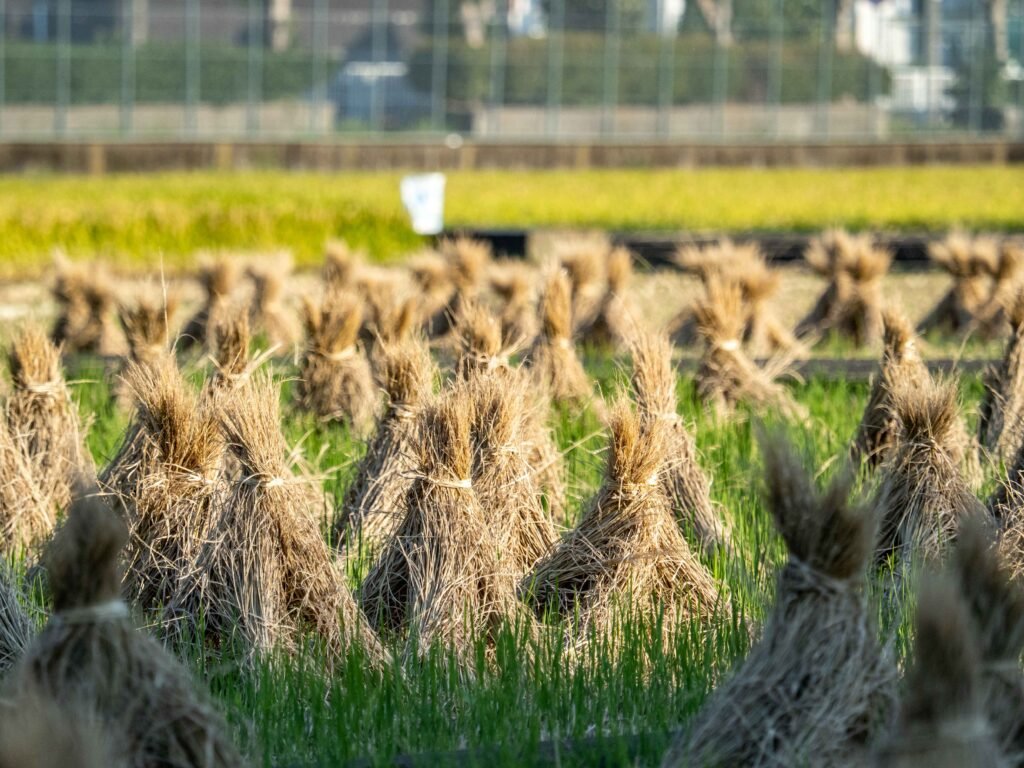
Overview
Rice is the second staple food and cash crop in Pakistan after wheat. It is a very important cash crop for rural employment and a lifeline for billions of people in the world. Rice plays an important role in agricultural economics and the rural sector. Farmers need to make wise decisions to obtain a good quality yield, the right use of resources, timely decisions, and careful planning. A rice production plan guide about this process ensures all phases from land preparation to post-harvest handling contribute to better profitability and productivity.
Rice crop also provides raw material for many industries, for example, rice straw is used as animal feed-provide high quality oil, and its husk is used in paper and pulp mills. In this post, we will discuss the rice production plan, why it is important, and how farmers can implement it step-by-step.
Is this plan important?
Yes, without proper information or knowledge, farmers can get inconsistent results. A production plan provides a roadmap that helps in:
- Maximizing yield
- Reducing costs.
- Managing risks
- Improving quality
Raising rice nursery
There are 3 different methods used in raising rice nursery, and it depends on farming practices, soil characteristics, and irrigation system.
1- Wet Method
- Cover the Bundles (heaps) -15 to 20 kg of treated seeds with wet sacks. Keep sprinkling water on it. After about 36-48 hours, the seed will start to sprout.
- Poor quality and damaged seeds must be removed by adding 3% salt solution to 1 litre of water. Discard the seeds, which start floating on the surface of the solution.
- After 2 weeks, prepare the seedbed before planting. A thin layer of water is prepared on it (after leveling land). Maintain a water level of 1.5 inches.
2- Dry Method
- The dry method is used if the soil is loamy and puddling is not possible. After irrigation, the field must be ploughed and planked.
- A raised seedbed is prepared under dry conditions. Treated dry seeds should be evenly broadcast in each bed.
- 1-inch-thick layer of rotten farmyard manure or rice straws, and sprinkle water over it. The nursery will be ready in 35-40 days (its uprooting becomes easy).
3- Raab Method
- The raab method is used if the soil is hard.
- A 2-inch-deep layer of farmyard manure. The nursery is ready in 35 -40 days.
Land Selection and Preparation
Key points include:
- Soil type
- Land leveling
- Plowing and puddling
Seed Selection and Sowing
The choice of seed determines the success of the crop. Farmers should select varieties that suit their soil conditions, local climate, and market demand. For example:
- Basmati varieties
- IRRI or hybrid varieties
- Flood- or drought-resistant varieties
Irrigation and Water Management
Advantages of efficient water management include:
- Reducing irrigation water use by 20–30%.
- Lowering input costs for farmers.
- Minimizing the release of harmful gases
Efficient Use of Fertilizers and Nutrients
It includes:
- Nitrogen (N)
- Phosphorus (P)
- Potassium (K)
Cleaning Process
Here, we’ll face the biggest challenge in rice farming, i.e. protecting the crop from weeds, diseases, and pests.
- Weed- Farmers control them through maintaining proper water depth, hand-weeding, and herbicides
- Pests such as planthoppers, leafhoppers, and stem can be a reason of huge loss. IPM is the right approach for this problem.
- Diseases like sheath blight, blast, and bacterial leaf blight should be monitored.
Harvesting and Post-Harvest Handling
Harvesting is the last step in rice production. Harvesting too early reduces quality and grain maturity, too late increases pest damage. Crop must be harvested on time to attain maximum yield and grain quality.
- Signs of maturity: About 80–85% of the grains turn golden yellow & moisture of the grain is 20-22%.
- Moisture content must be reduced to 12-13% for storage, by exposing rice to the sun for 4-6 hours.
- Harvesting methods: Manual or through a machine.
- For mechanical harvesting, a Kubota rice harvester is commonly used. It is used to reduce the loss of grains. Farmers clean it thoroughly and prevent any impurities.
- No need to choose mechanical harvesting if moisture content is <18%
Modern Trends in Rice Production Planning
- Climate-smart rice farming
- Mechanization
- Optimized Resource Use
- Digital tools
- Durability
- AWD-Alternate Wetting and Drying

Muhammad Arif CEO, MBA in Finance and Marketing from South Korea University. Result-driven Chief Executive Officer with over 15 years experience leading and increasing growth in businesses. Starting from the scratch, launching and leading increasing in revenue in the three businesses in animal feed and food exports, and renewable energy in Pakistan. Particularly, having plentiful experience on East Asia and Middle East markets, and working with multinational organizations including the UN.


